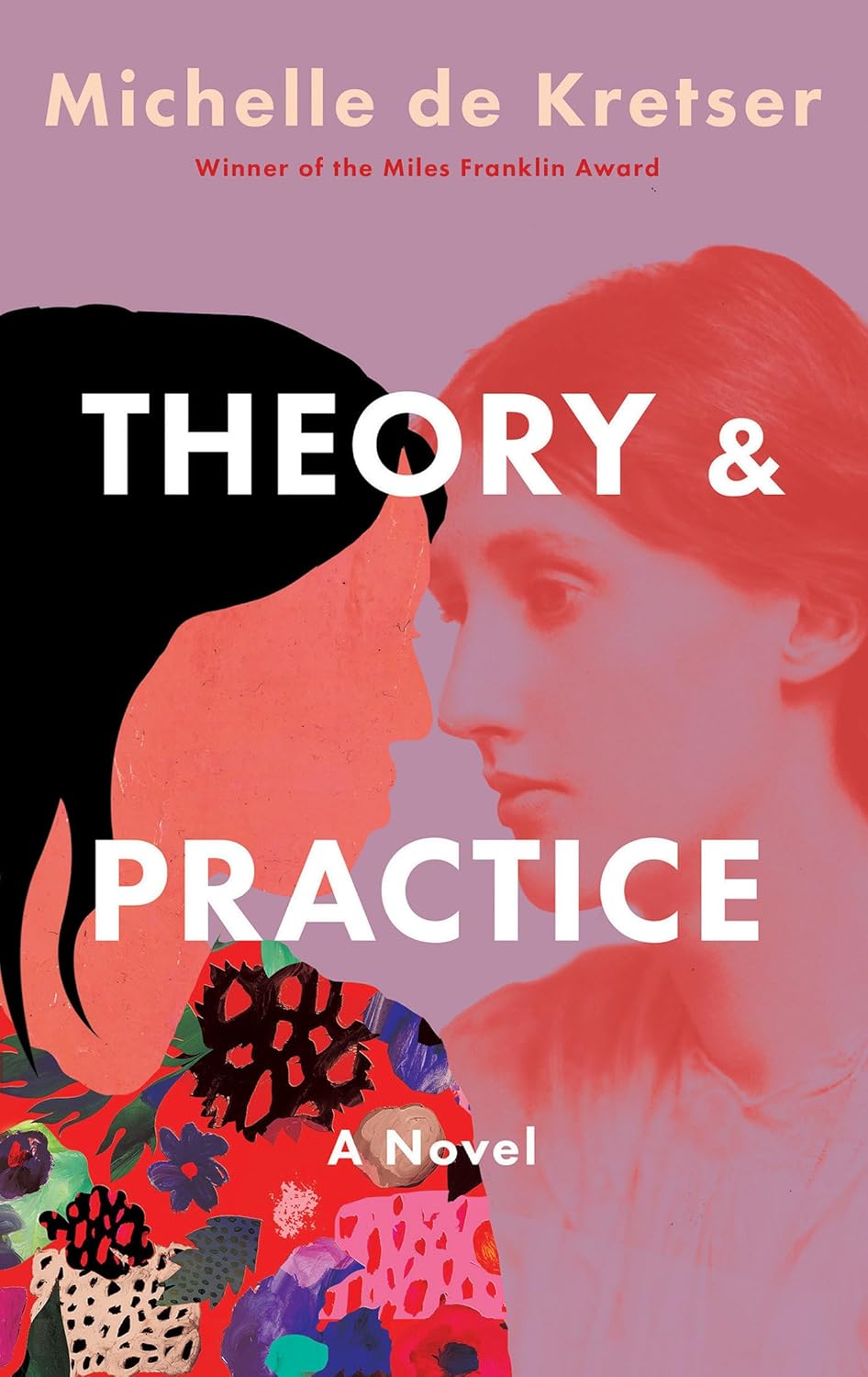Theory & Practice: A Novel
- By Michelle de Kretser
- Catapult
- 192 pp.
- Reviewed by Carr Harkrader
- March 3, 2025
An incisive, cerebral tale of privilege, identity, and Virginia Woolf.

While watching the Olympics last summer, I (to the annoyance of friends beside me) would repeatedly mutter, “How did they do that?” after a pole vaulter soared the heights on a bendy stick or a gymnast swiveled on a narrow balance beam. I said it with a mixture of astonishment and actual ignorance; how did they do it?
I’m a bit more educated about books than sports, but I thought the same thing again and again while reading Michelle de Kretser’s extraordinary new novel, Theory & Practice. It is unsettling and outstanding.
De Kretser isn’t widely known in the U.S., although her 2007 novel, The Lost Dog, was longlisted for the Man Booker Prize. In Australia, her home and the setting for much of her fiction, she’s received national prizes and recognition for her works exploring identity, colonization, the toils and foils of being an artist, and the emotional tethers that hold — and tangle — people together. Theory & Practice expands on some of these themes and does so with an intriguing balance of aesthetic, critical, and psychological skill.
The novel’s unnamed narrator was born in Sri Lanka, and she and her mom move to Australia when she’s around 10 years old. Later, as a young woman, she moves from Sydney to Melbourne for graduate school (it seems somewhat like moving from sunny but shallow Los Angeles to brainy and cold Boston), leaving behind her attentive mother. Her research focuses on Virginia Woolf and the “gendered self” in Woolf’s later fiction. At least, she feels it’s supposed to — given the pressure from her faculty mentor and thesis advisor — but she’s increasingly drawn to Woolf’s interactions with Indians and other nonwhite members of Britain’s imperial network.
This is 1986, and the ascendance of “Theory” and its knots of verbiage within academia is at its peak. It’s also the language used within the narrator’s new group of friends in her gritty but gentrifying neighborhood of St. Kilda’s. De Kretser, among other things, is good at writing characters who are very aware and very clueless in equal measure; it helps that her subjects, grad students and academics, have a corner on that market.
Kit, a fellow student whom the narrator eventually becomes involved with, describes his bond with his girlfriend as a “deconstructed relationship.” Other friends sit around on rummaged furniture like old men talking about the weather — except, in this case, the weather is Late Capitalism. As our narrator observes:
“How could they be sure we weren’t stuck in About a Third of the Way Through Capitalism?”
All of this may seem too narrow in scope, and some readers might initially find the grad-school setting off-putting in its jargon-laden insularity. But Theory & Practice is more than just a campus novel set in neoliberal times. The narrator’s race and class, to use a theory-infused word, situate her differently among her friends. They are flush with capital — either cultural or the good old-fashioned economic kind. The narrator is drawn to it but aware she doesn’t have it. Her mother back home in Sydney seems a simpler figure by comparison, sending anxious but supportive messages the narrator wants to ignore.
Early in the book, the narrator describes the difference between the information she “extracted” from consumers in her previous job as a market-research analyst, and the knowledge she seeks in graduate school:
“…knowledge was different: unbounded, endlessly renewed. I wanted the roll and the slosh of its depths beneath me, the risk of drowning. I wanted it to carry me beyond the limits of myself.”
But is its morbid depth worth the immersion? The literary critic Cynthia Ozick once wrote that the typical Henry James heroine, by the end of a novel, “has known too little and now knows more.” After her time in Melbourne, de Kretser’s protagonist certainly knows more — of Theory, of privilege, of relationships. But what has such knowledge done to her? Has it really unbound her or simply offered fresh constraints?
In a less-skilled writer, this all could be overwrought. But de Kretser has crafted a resonant voice that propels the story forward; the narrative somehow maintains immediacy throughout. Form clearly matters to the author, too. Indeed, Theory & Practice begins as a whole other novel, following a young Australian man traveling through Switzerland. When our narrator finally interjects and shares her disappointment at what she’s written so far, the reader is forced into awareness about revelatory cracks that will continue to shake the foundation of the rest of the book.
The narrator talks of the unending lack of “settled signifieds” in Woolf’s work, everything forever ambiguous and incomplete from one consciousness to the next. Novels themselves are supposed to be a tool for seeing beyond the limits of our own mind and into someone else’s; as one of de Kretser’s characters describes it, they are “an ethical device for eliciting the reader’s empathy and compassion.” But Theory & Practice questions whether those devices can be unsettled themselves. The writing that so often reflects back at us can always contain delicate jewels mined from contaminated quarries.
Carr Harkrader is a writer and book critic in Chicago. You can follow him on X at @CarrHark.
.png)
